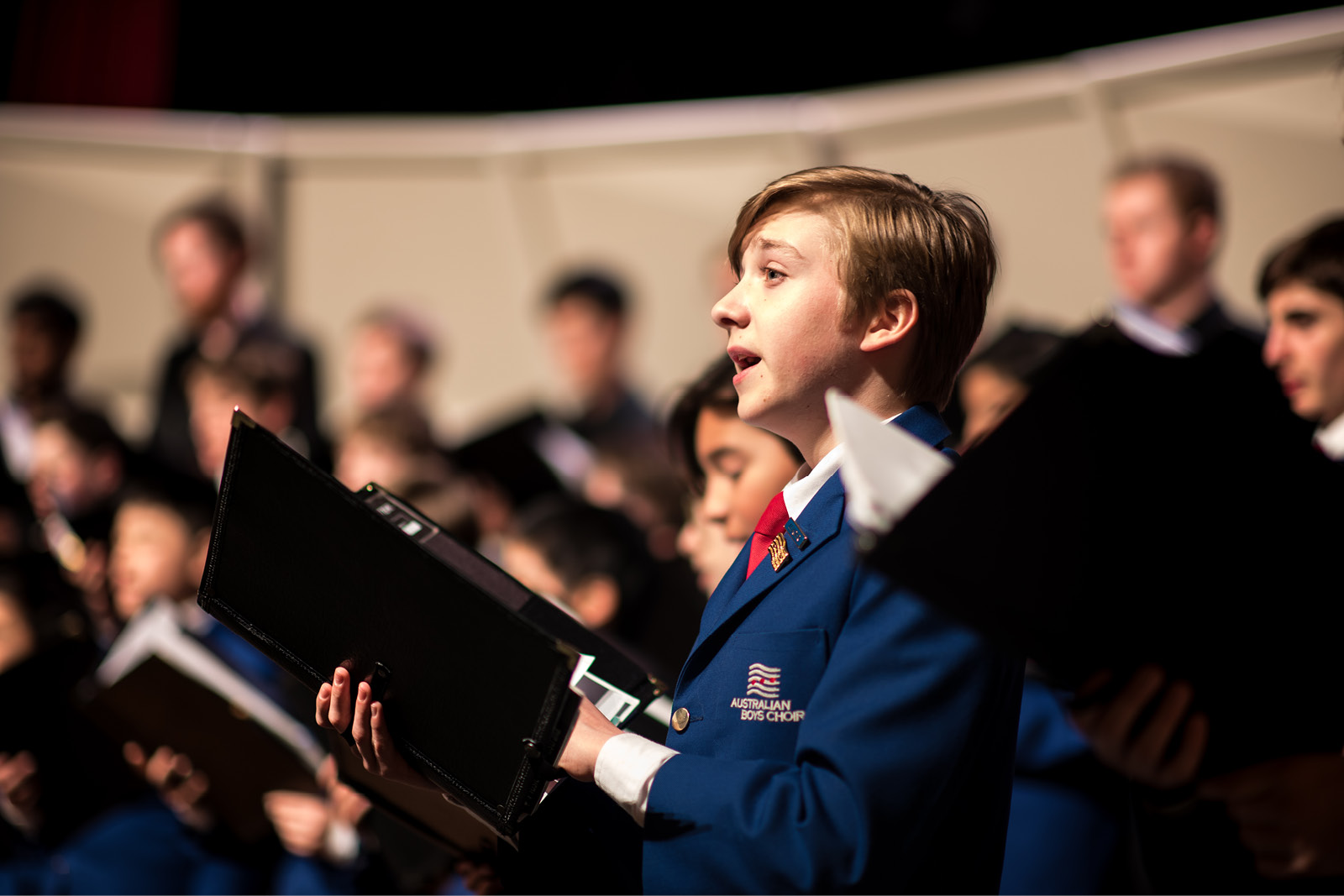His name was Kelly and he formed a gang. However, his name was not Ned, nor did his lads terrorise the roads around Glenrowan. Rather, Vincent Kelly, a dedicated school music teacher founded the Australian Boys Choir in October 1939, just after the outbreak of World War II. It is heartening to know that Kelly’s vision has endured these past 80 years and that the organisation he founded now flourishes, currently engaging with about 200 young singers across a range of ensembles. (One of these ensembles, for boys whose voices are changing, is wryly called The Kelly Gang.)
 The Australian Boys Choir. Photo © Jane Kupsch
The Australian Boys Choir. Photo © Jane Kupsch
There were ample demonstrations of the choir’s good musical health at its latest concert which focussed on Australian compositions, evoking both Indigenous and non-Indigenous soundscapes. West Australian composer, Iain Grandage’s Hush: On the Death of a Bush Church was an excellent curtain-raiser in which quiet susurrations and clapsticks helped evoke a desolate scene. The Vocal Consort, a group of fourteen young men who provide the lower voice parts for the choir were particularly impressive with their crystal-clear diction and excellent intonation; consistent qualities that put them at the very top of their game.
Obviously well trained, the boy trebles are committed performers, whether summoning up Grandage’s sad scene or telling a humorous story, as in the first of Stephen Leek’s three Island Songs. Their well projected but unforced production together with the clarity of their diction allows them to be engaging musical communicators. The choir ably rose to the challenges of Leek’s close harmony in Until I Saw the Sea, creating a telling musical picture. Continuing the maritime theme, Tides of Ocean by Sydney-based Matthew Orlovich saw the choir revelling in the music’s word painting and infectious rhythms.
While the main choir and Vocal Consort took a break, the stage was filled with members of the various training groups of the Australian Boys’ Choral Institute who premiered Surefire Sea Shanties, a work by choir staffer, Timothy Mallis. This appealing and well constructed medley was dispatched with plenty of energy and gave these choristers an enjoyable opportunity to engage in a variety of moods and styles. Transitions between the various sections were fairly well handled.
After interval, before the return of the full choir, The Vocal Consort sang Paul Stanhope’s I Have Not Your Dreaming. The text by Margaret Glendinning pays tribute to her distinguished teacher, Oodgeroo Noonuccal (formerly known as Kath Walker). With their innate musicality, the singers brought the work’s yearning for understanding and reconciliation poignantly to life. Their very soft singing was excellent.
Oodgeroo was also the focus of the following two works. The simplicity of Hope There Is by Clare Maclean contrasted with the cleverly layered textures of How Shall We Sing in a Strange Land? By Joseph Twist. Twist’s interweaving of Oodgeroo with the Latin text of Psalm 137 is destined to become an Australian choral classic. This thoughtfully conceived work points to the imperative to find acceptance and common ground while highlighting the complexity of issues surrounding who finds Australia “strange”. As with the rest of the program, director Nicholas Dinopoulos brought great energy and drive to the music, encouraging a spirited performance from his eager, young forces.
Twist’s straightforward setting of the popular lyric, Do not stand at my grave and weep was touchingly sung and a quiet foil to the boisterous Dance Mantra by Ross Edwards that concluded the formal program. In similar vein, Leek’s Tunggare provided an upbeat encore.
With its insightful programming, wide community engagement and high artistic standards, the Australian Boys Choir and its affiliate groups have much to celebrate in their 80th anniversary year.











Comments
Log in to join the conversation.